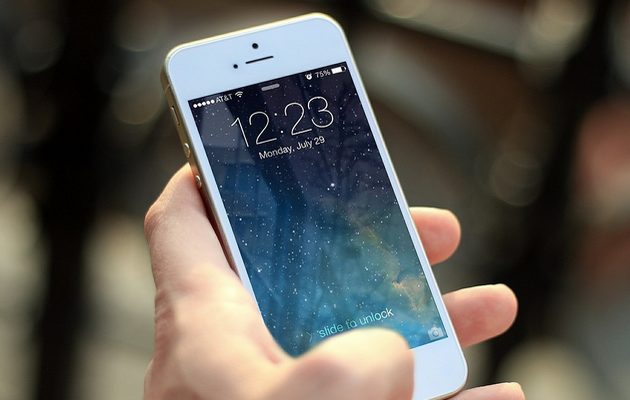McSTREAMY.COM (02/20/2015) – You have seen the commercials, and read the ads, but what the heck is this LTE, and why do we need it, when we consider going with this mobile phone service, or that one? Well, first of all, it’s short for Long Term Evolution. That clears that up. But, wait, there is more to it than that.
Techopedia.com calls LTE “a standard for smooth and efficient transition toward more advanced leading-edge technologies to increase the capacity and speed of wireless data networks”.
“An acronym for Long Term Evolution, LTE is a 4G wireless communications standard developed by the 3rd Generation Partnership Project (3GPP) that’s designed to provide up to 10x the speeds of 3G networks for mobile devices such as smartphones, tablets, netbooks, notebooks and wireless hotspots”, according to WebOPedia.com.
WebOPedia continues: 4G technologies are designed to provide IP-based voice, data, and multimedia streaming at speeds of at least 100 Mbit per second and up to as fast as 1 GBit per second.”
You often see LTE coupled with 4G, as in 4G LTE. What are we supposed to get out of that? To some of us, it just makes the whole thing more confusing. Verizon Wireless has an answer:
“The term 4G LTE is really two terms. 4G means the fourth generation of data technology for cellular networks following 3G, the third generation. LTE stands for Long Term Evolution and is short for a very technical process for high-speed data for phones and other mobile devices. Together, they make 4G LTE the fastest 4G service available today,” Verizon Wireless on it’s website at VerizonWireless.com.
Okay, so, 4G is a really short way to say 4th Generation. Add LTE to that, and, that means that 4G LTE (Long Term Evolution) is even better than just 4G (4th Generation). But, is the combination of 4G and LTE really something good for us?
“Being the fastest network available means download speeds four to five times faster than 3G networks, which rivals some home broadband connections,” VerizonWireless writes.
VerizonWireless continues: “The real hook, though, is the fact that consumers don’t have to be at home to appreciate these speeds. Consumers can access the internet wherever there is coverage with any 4G-enabled device, including smartphones, tablets and mobile hotspots”.
What does WikiPedia.org have to say about LTE?
“LTE, an abbreviation for Long-Term Evolution, commonly marketed as 4G LTE, is a standard for wireless communication of high-speed data for mobile phones and data terminals. It is based on the GSM/EDGE and UMTS/HSPA network technologies, increasing the capacity and speed using a different radio interface together with core network improvements. The standard is developed by the 3GPP (3rd Generation Partnership Project) and is specified in its Release 8 document series, with minor enhancements described in Release 9,” WikiPedia writes.
Uh Oh. More acronyms. GSM, EDGE, UMTS, HSPA, and, 3GPP? Can it GET more confusing?
WikiPedia continues, “LTE is the natural upgrade path for carriers with both GSM/UMTS networks and CDMA2000 networks. The different LTE frequencies and bands used in different countries will mean that only multi-band phones will be able to use LTE in all countries where it is supported”.
Okay…… Maybe ExtremeTech.com can unmuddy the waters:
“LTE is a very good, easily deployable network technology, offering high speeds and low latencies over long distances,” according to ExtremeTech.
ExtremeTech.com goes into it even further:
“For example, the three LTE networks in New York City were rated well. Verizon’s LTE service was rated with an average download speed of 7.67Mbps and an average upload speed of 3.76Mbps. AT&T’s LTE service was rated with an average download speed of 19.21Mbps and an average upload speed of 10.09Mbps. Sprint’s LTE service was rated with an average download speed of 12.35Mbps and an average upload speed of 4.24Mbps. Verizon’s 3G service was rated with an average download speed of 0.47Mbps and an average upload speed of 0.15Mbps. Sprint’s 3G was similarly bad. Similar ratings followed in other cities as well,” according to ExtremeTech.
It sure sounds like there might be a connection between LTE and pretty darn fast. But, what about AT&T? What is their explanation for what 4G LTE is all about?
When the page at ATT.com opened up, we were greeted with, ” AT&T’s network now has the nation’s strongest LTE signal.”
Now, that kind of simplified the whole thing and summarized what we really need to know about this LTE thing, but, we weren’t quite prepared for the next bit of information at ATT.com:
“By doing things like placing LTE radios at the top of towers to maximize power and optimizing cell sitedensity we’ve engineered our network to provide an optimal signal experience,” ATT.com’s explanation stated.
Wait a minute! What’s that “radios” word doing after LTE? Just when we were beginning to get a handle on this 4G LTE thing (well, kind of). Now we have to find out what LTE RADIOS is all about?!
























